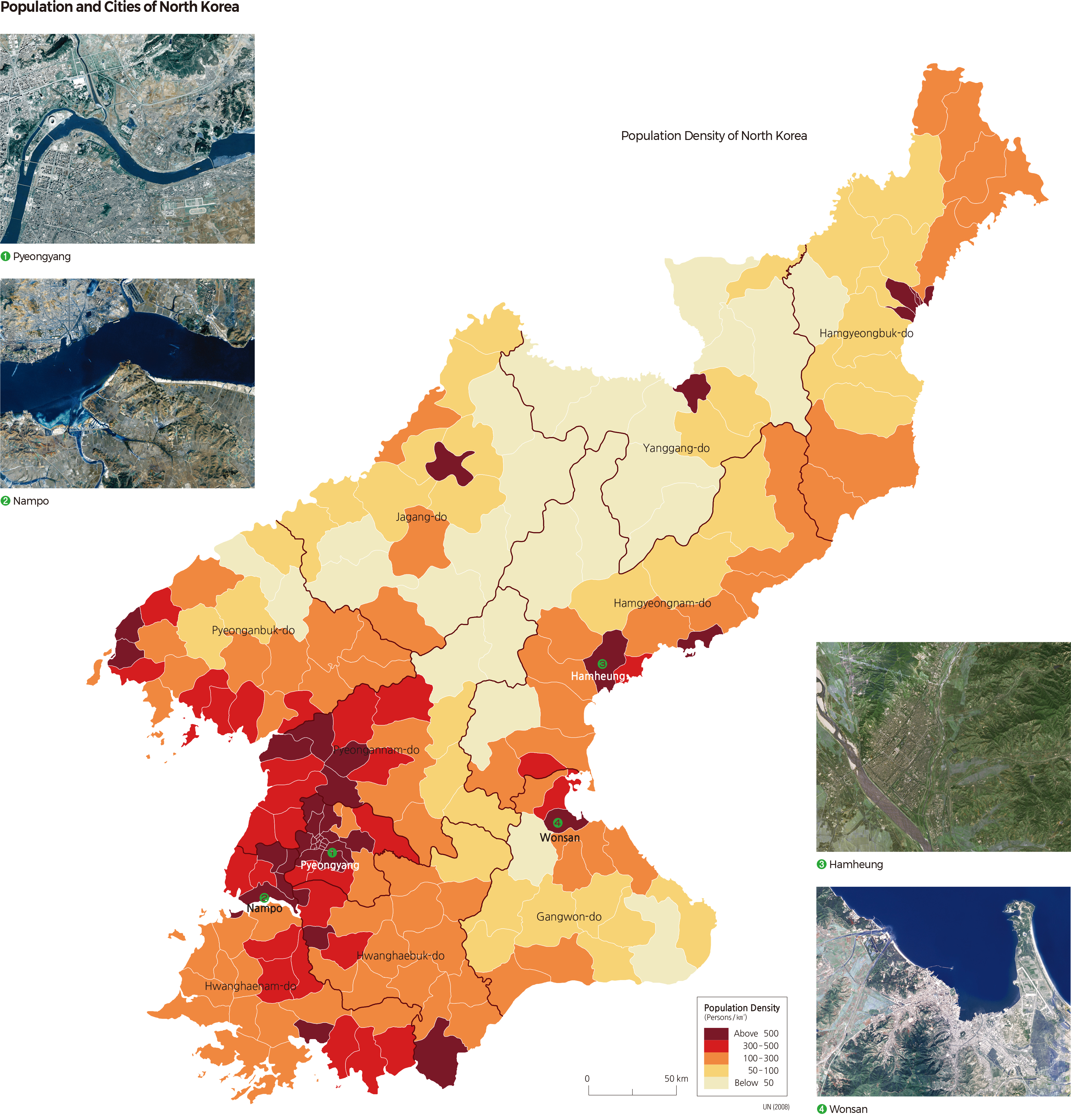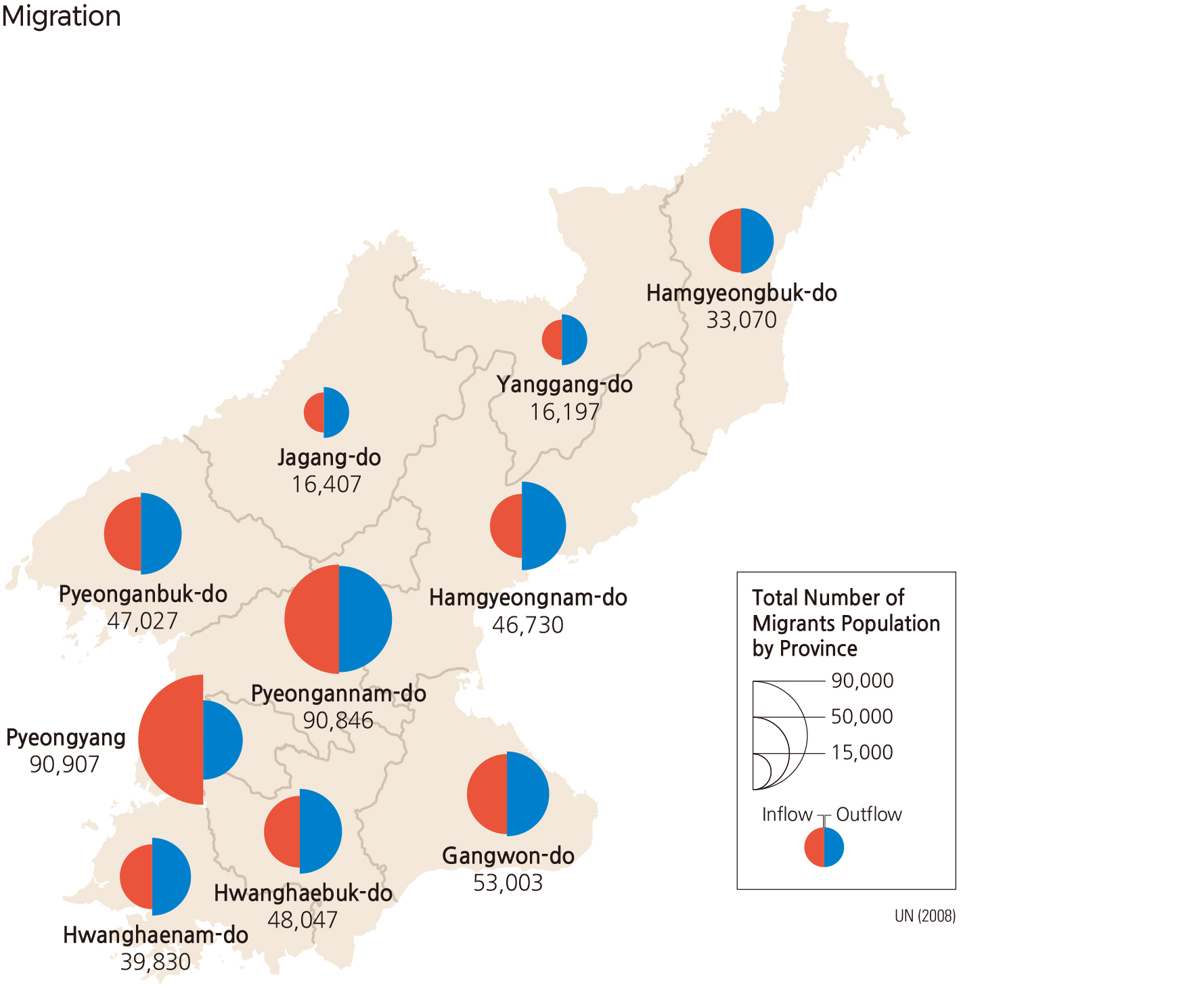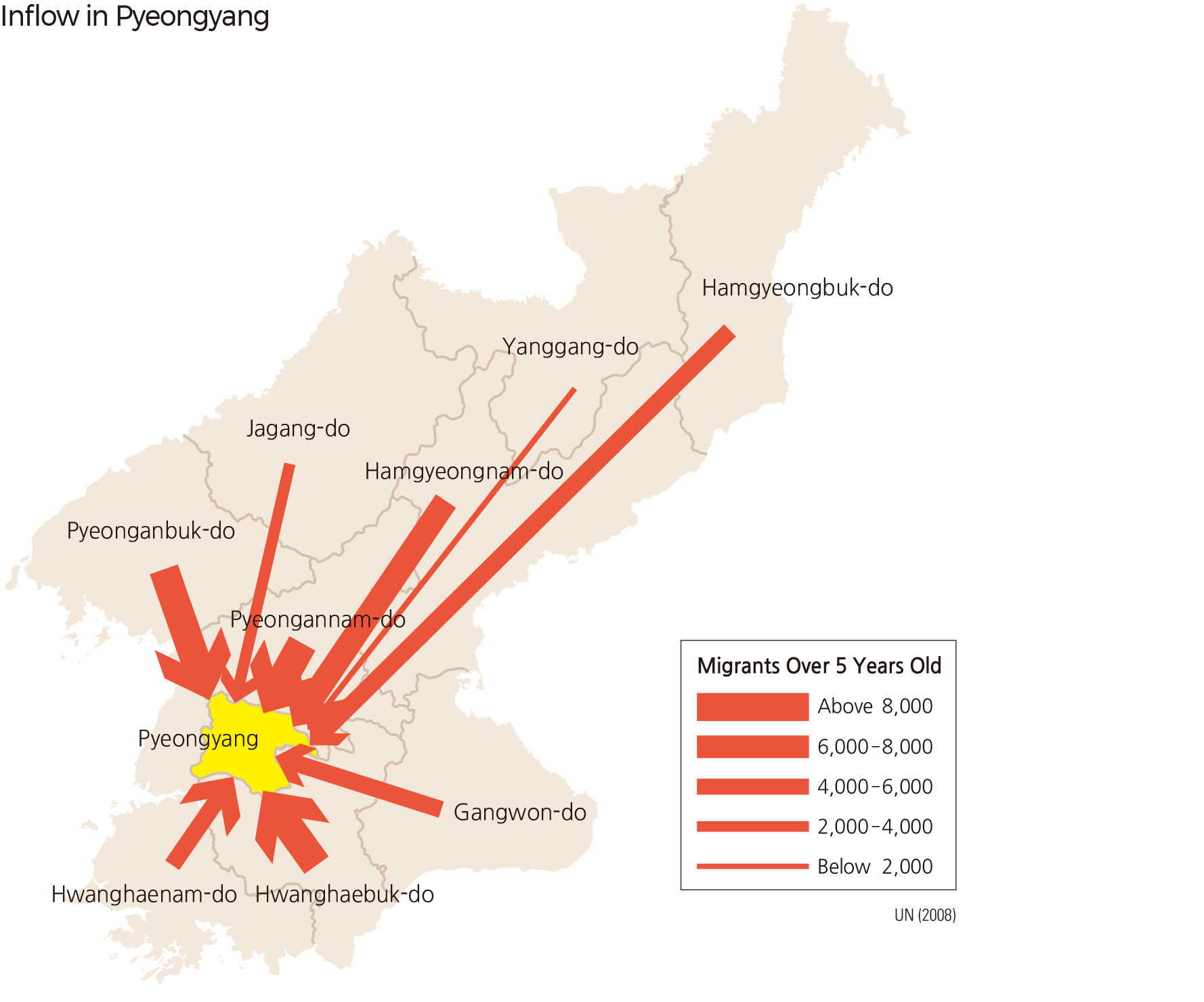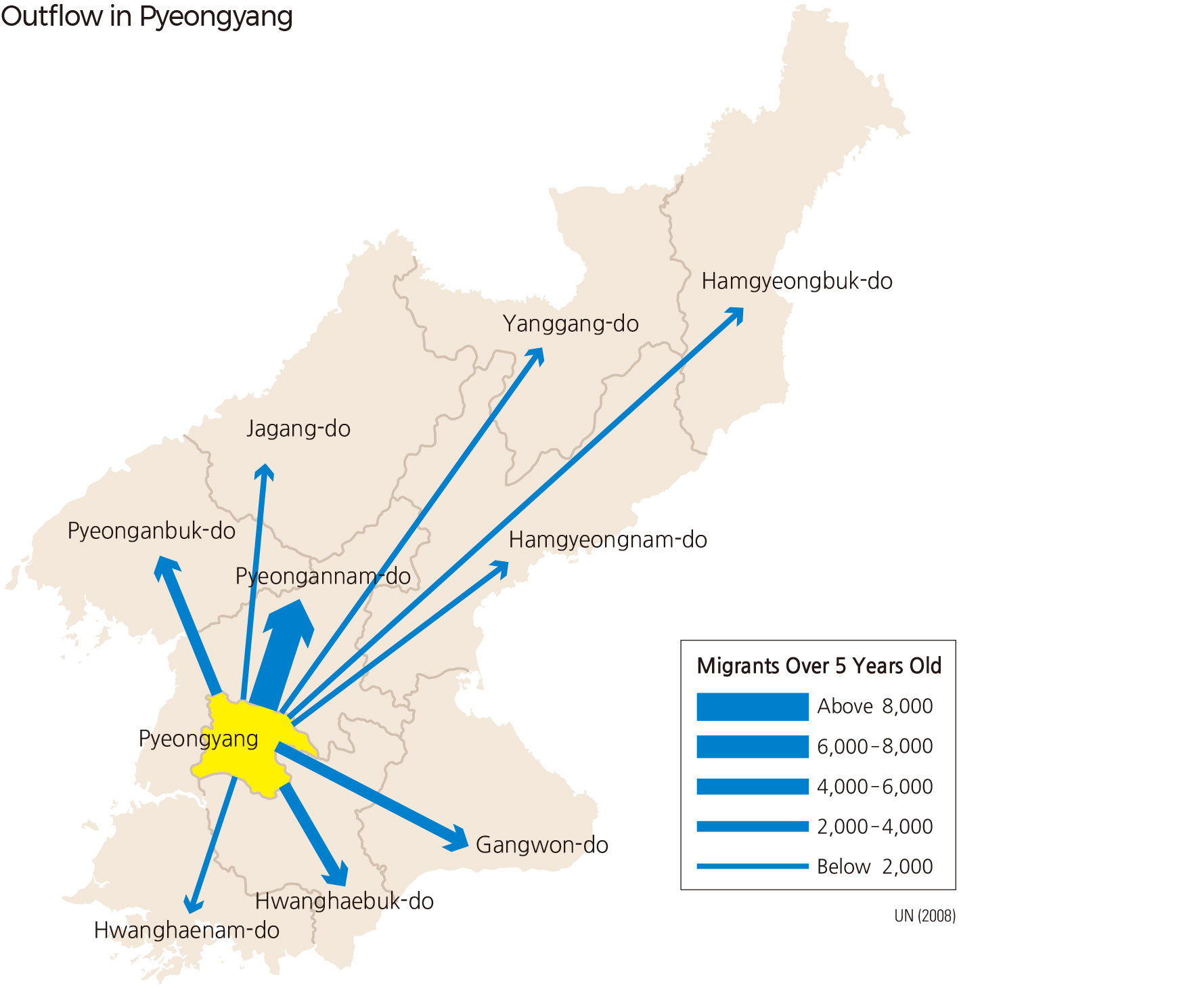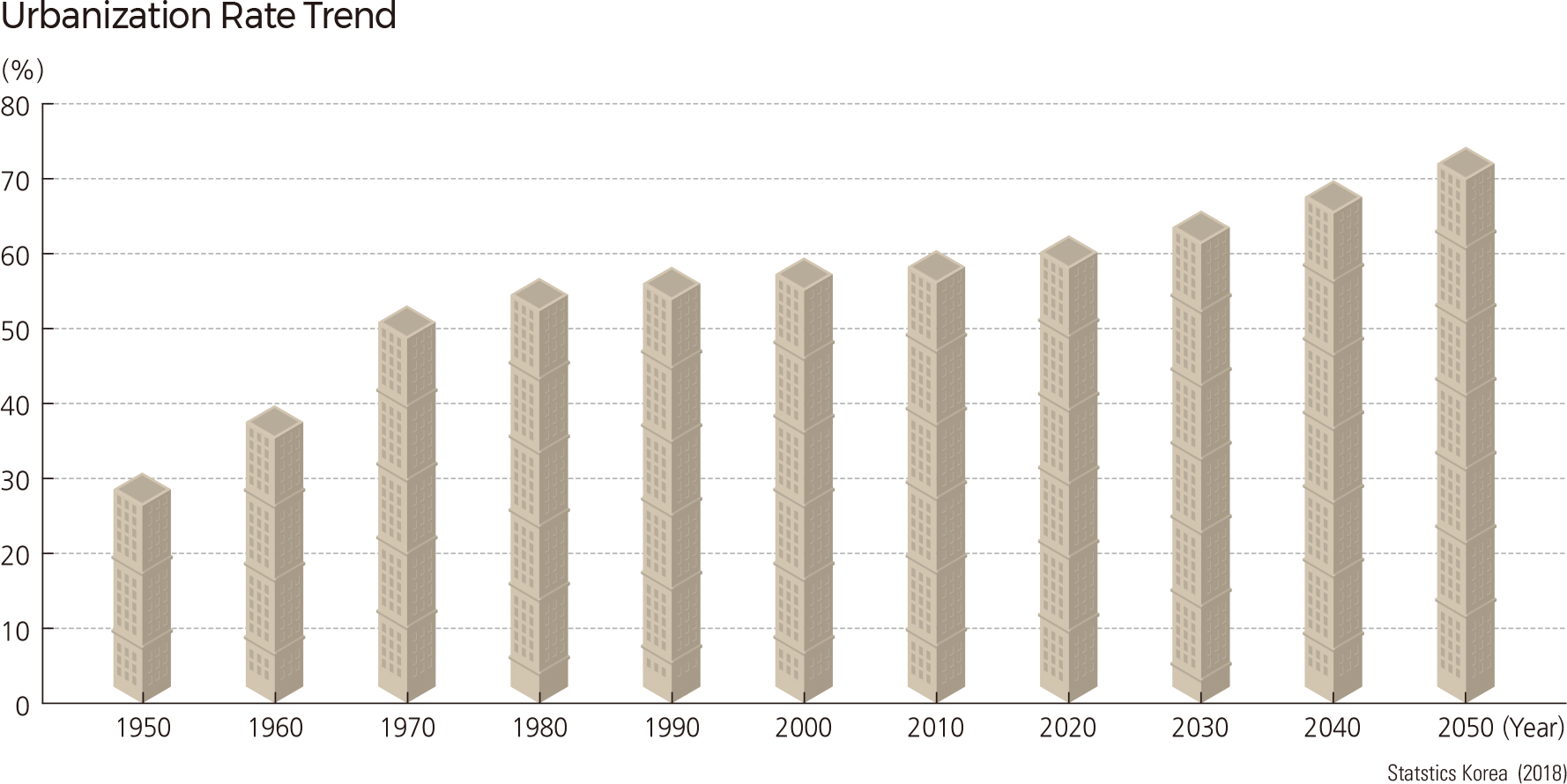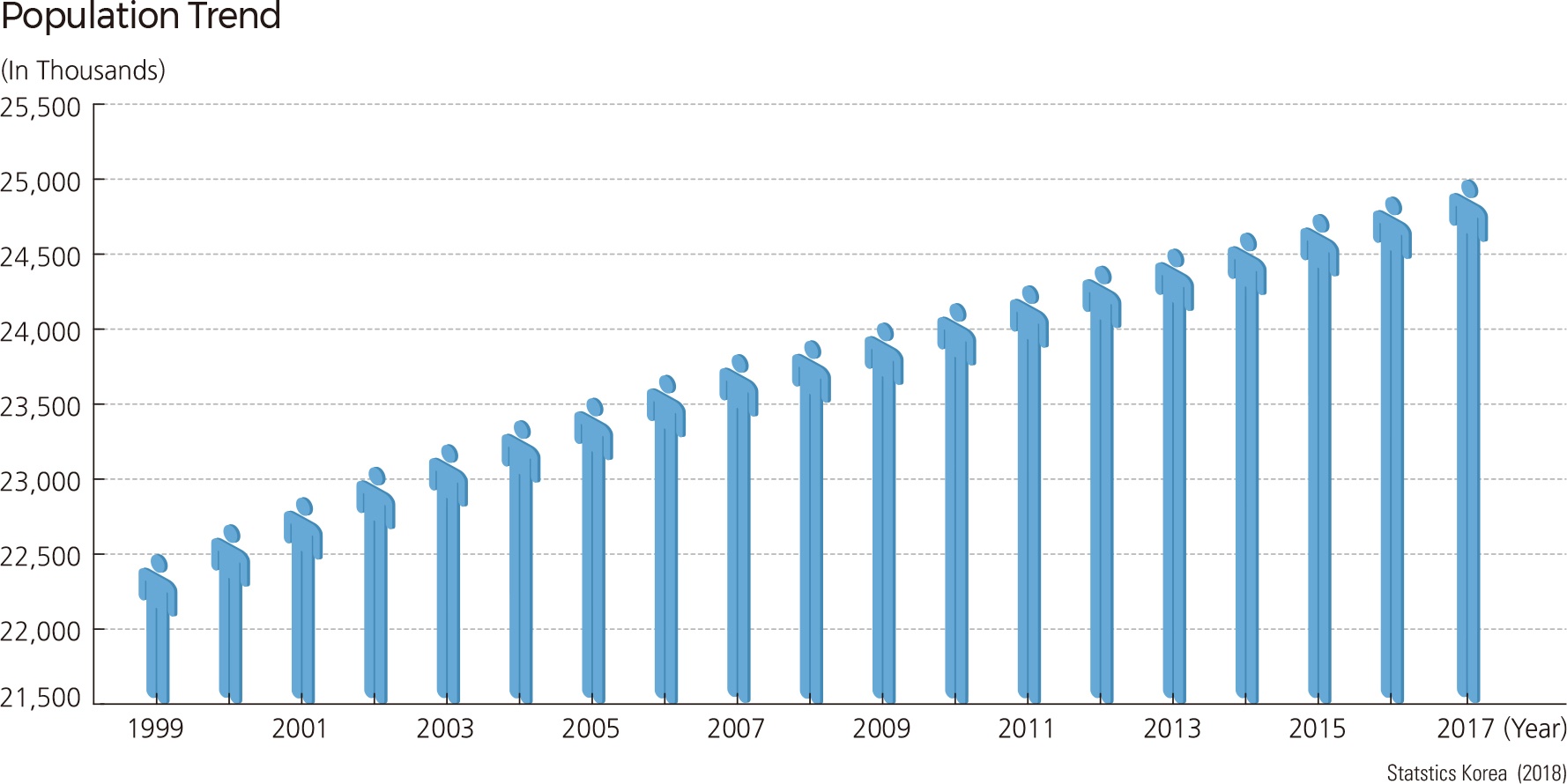English I 2019
In 1946, a year after Korea’s liberation from Japan, the total population of North Korea reached 9.26 million. However, during the Korean War, the North’s population dropped to its lowest level at 8.49 million. By 1958, the population had grown continuously to surpass the ten million mark for the first time in history, and it reached 20 million by the late 1980s. According to North Korea’s central statistics office, the country’s population recorded a net loss in 1992 for the first time. Since 1993, North Korea has shown an average annual population growth of 1%, and its population exceeded 24 million in 2004 and 25 million in 2017.
As shown on the map above, most North Koreans live in the southern and western parts of the country in the plains and lowlands. Pyeongyang and its neighboring Pyeongannam-do show the highest population density. The population density is generally low in the mountainous northern and eastern parts (Jagang-do, Yanggang-do, Hamgyeongbuk-do, Hamgyeongnam-do, and Gangwon-do), with the exception of scattered cities, such as Hyesan-si, Cheongjin (Chongjin)-si, Hamheung (Hamhung)-si, and Ganggye-si, and the eastern coastal area.
According to UN population census statistics, the migrant population above the age of five in 2008 reflected less than 1% of the total population, which demonstrates that interregional migration is uncommon. Exceptions are Pyeongyang and Pyeongannam-do, where the largest volume of migrant population ultimately lives. The Direct-Administered City of Pyeongyang, in particular, boasts the highest share and number of incoming population, which is 28.3%. The city’s population out-migration accounts for 10.2% of the total. Besides Pyeongyang, only Pyeongannam-do and Hamgyeongbuk-do have more people moving in than those moving out, whereas all of the other regions are experiencing serious population out-migration. Hamgyeongnam-do, especially, has taken the biggest hit, with twice as many people leaving as those moving into the province.
As for Pyeongyang, 30.2% of its incoming population is from Pyeongannam-do, followed by Hwanghaebuk-do (13.6%) and Pyeonganbuk-do (13%). Among those who left Pyeongyang, 40% migrated to Pyeongannam-do. Pyeongyang’s out-migration to other regions is generally evenly distributed. One of the interesting features of Pyeongyang’s population movement is that a significantly small number of people move to Yanggang-do (0.01%) or Jagang-do (0.03%) compared to all of the other provinces. Similarly, those moving from Yanggang-do and Jagang-do to Pyeongyang represent 0.03% and 0.04%, respectively. This trend may be a result of the fact that the two provinces have smaller populations than other provinces. However, given that the similar-sized Gangwon-do accounts for as much as 8.5% of Pyeongyang’s incoming population and 14.3% of its outgoing population, the low migration trend for Yanggang-do and Jagang-do appears to be related to their socioeconomic conditions as two of the country’s most underdeveloped provinces.
As of 2008, 64.6% of North Korea’s total population lived in urban regions. Pyeongyang is the most urbanized area, with 86.7% of its population residing in its urbanized area. Hamgyeongbuk-do, which has major cities such as the Najin-Seonbong (Rajin-Sonbong) Special Economic Zone and the city of Cheongjin, is the second most urbanized area, with an urbanization rate of 70.7%, followed by Pyeongannam-do (64.9%) where the special city of Nampo is located. All of the other provinces, however, have a below-average urbanization rate. Regional inequality in terms of urbanization is a serious problem.
Historically, North Korea once experienced rapid urbanization as it actively pursued industrialization following Korea’s liberation from Japanese colonial rule in 1945. As a result, their urbanization rate jumped from 31% in 1953 to 56.7% in 1976; the pace has significantly slowed since then. However, according to the 2018 UN World Urbanization Prospects, the urbanization rate of North Korea has increased again since 2018 and is expected to exceed 70% in 2041 and reach 74.2% in 2050.
As of 2008, the population of Pyeongyang, the largest city in the North, stood at 3,255,000, followed by Hamheung-si in Hamgyeongnam-do (768,000) and Cheongjin-si in Hamgyeongbuk-do (667,000). Pyeongyang is the only city whose population is more than one million; only two other cities have more than 500,000 people, and only 18 other cities surpass the 100,000 mark.
North Korea’s ranking by population of its cities in 1940 was as follows: Pyeongyang, Cheongjin-si, Wonsan-si, and Hamheung-si. As Hamheung-si increased in size, the ranking changed in 1967 to Pyeongyang, Hamheung-si, Cheongjin-si, and Wonsan-si. In 1982, Cheongjin-si became North Korea’s second-largest city, and the ranking changed once again to the following: Pyeongyang, Cheongjin-si, Hamheung-si, and Wonsan-si. During the 1990s, Hamheung-si regained its second-place rank, and Nampo-si showed rapid growth. As of 2008, the largest cities ranked as follows: Pyeongyang, Hamheung-si, Cheongjin-si, and Nampo-si. The map shows that the two pillars of North Korea’s urban development are the Pyeongyang-Nampo region in the West and the Hamheung-Cheongjin region in the East. Among other cities, Hyesan-si, Ganggye-si, and Sinuiju-si in the northern area and Pyeongseong-si, Gaecheon-si, Suncheon-si, and Deokcheon-si in the central area boast a high urbanization rate of over 80%. |
